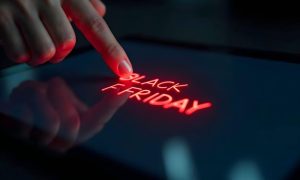
Every year, Black Friday reveals more than just the best deals. It shows how people think, what they value, and how shopping behavior evolves with each new season. The chaos of doorbusters and midnight lines has faded, replaced by calculated planning, mobile alerts, and a new kind of buyer, one that expects transparency, personalization, and real value behind every offer.
Understanding Black Friday consumer behavior is no longer optional for brands. It’s the difference between connecting with customers and getting lost in the noise. Shoppers are more informed, more strategic, and more cautious with their spending. They compare prices, follow brand reputations, and weigh ethical or environmental impact alongside discounts.
This shift means one thing: guessing how your audience will behave is the fastest way to lose them. The brands winning are the ones that study their customers’ motivations, anticipate their decisions, and build marketing strategies that feel human, not mechanical.
Why Guessing Consumer Behavior Is Your Biggest Black Friday Risk
Too many brands still treat Black Friday like a gamble. They guess what will sell, copy what competitors are doing, and flood every channel with the same generic discounts. It’s fast, it’s easy, and it rarely works.
Shoppers today are far more analytical than they seem. They recognize recycled marketing messages instantly and tune them out just as quickly. When your campaign isn’t grounded in real consumer insight, it shows. The result is wasted ad spend, low engagement, and a customer base that feels unseen.
The truth is that every buying decision now comes from a mix of emotion and logic. People don’t just chase discounts, they chase reassurance. They want to know that they’re spending wisely, supporting a trustworthy brand, and getting an experience worth their attention.
If your strategy is built on assumptions, you risk missing those emotional triggers completely. The difference between a brand that connects and a brand that’s ignored often comes down to who took the time to understand what customers actually want.
Black Friday success isn’t about who discounts the most, but who listens the best. The brands that study behavior patterns, adapt to shopper psychology, and build campaigns around data-driven understanding will always come out ahead.
Segmenting Today’s Black Friday Consumers
Not all shoppers think the same way, and not all of them are chasing the same kind of deal. Understanding these differences is the key to building campaigns that actually resonate. By recognizing how each type of consumer shops, you can tailor your message, offers, and timing to match what truly motivates them.
I. Generation Differences (Gen Z vs Millennials vs Boomers)
Every generation brings its own shopping logic to Black Friday.
Gen Z approaches the season as a social and digital experience. They follow trends on TikTok, compare products through influencer reviews, and rely heavily on peer recommendations before making a purchase. For this group, authenticity matters more than aggressive discounts. They buy from brands that align with their identity and communicate with transparency.
Millennials are value-driven and practical. They tend to research more deeply before buying, balancing quality, price, and ethics. They appreciate personalized recommendations, loyalty rewards, and flexible payment options. To win them over, brands need to show consistency, not gimmicks.
Boomers, on the other hand, still enjoy the traditional shopping experience but have increasingly embraced e-commerce convenience. They look for trust, reliability, and straightforward communication. They respond well to clear pricing, simple navigation, and accessible customer support.
Knowing how each generation makes decisions helps you adapt your tone, creative approach, and even ad placement to connect more effectively.
II. Budget-Conscious vs Value-Seeking vs Impulse Buyers
Financial awareness is shaping how people approach Black Friday. While everyone loves a good deal, the motivation behind it varies.
Budget-conscious shoppers come prepared with strict limits. They track prices ahead of time, use coupon extensions, and often prioritize essentials or gifts. To appeal to them, clarity and honesty are everything, they don’t want to waste time hunting for fine print.
Value-seeking shoppers care less about the number on the discount tag and more about what they get in return. They’ll pay more if it means higher quality, ethical sourcing, or better service. To reach them, emphasize your brand story and long-term value.
Impulse buyers still exist, but they’ve evolved. Many now shop impulsively online, influenced by social media or flash deals. These customers respond best to urgency and convenience, short timers, one-click checkout, or exclusive offers that feel personal.
Understanding which segment your campaign speaks to helps you choose the right tone and format. Not every audience wants the same “biggest sale ever” message.
III. Ethical and Sustainable Buyers – How Their Behaviour Is Shifting
A growing share of Black Friday shoppers now shop with conscience. They look beyond the deal and ask questions about how products are made, packaged, and shipped. For them, sustainability isn’t a buzzword, it’s part of the value equation.
These shoppers often research company ethics before purchasing. They’re drawn to brands that take action on waste reduction, eco-friendly packaging, or social responsibility. They’re also willing to spend more on durable products that last longer instead of chasing the lowest price.
For brands, this means transparency is essential. Communicate clearly about your materials, sourcing, and sustainability initiatives. Even small efforts, when shared authentically, can earn trust and loyalty among conscious buyers.

The Five Major Shifts in Black Friday Consumer Psychology
Consumer psychology has always shaped Black Friday outcomes, but in 2025, these changes are no longer optional to understand, they define success. The way people make decisions, perceive value, and interact with brands has completely transformed. As explored in our article Black Friday Shopping Trends, this transformation goes hand in hand with the broader retail shifts that are redefining the entire shopping season.
1. The Calculated Planner vs. The Impulsive Shopper
The era of spontaneous buying is fading. Most shoppers now plan their purchases weeks in advance, using wish lists, price trackers, and deal alerts. They know exactly what they want and what they’re willing to pay for it.
While impulse buying still happens, it’s far more strategic. People act fast only when they already trust the brand or recognize real value. For marketers, this means preparation beats persuasion. Build anticipation early, offer clear comparisons, and help customers feel in control of their decisions.
2. The Value Engineer vs. The Discount Hunter
The new shopper doesn’t just look for the lowest price, they look for the smartest one. Consumers are weighing quality, durability, and brand ethics alongside cost. They’re asking, “Is this product worth it long-term?” rather than “How cheap can I get it?”
Brands that communicate product value, craftsmanship, and sustainability will win over the discount hunters who have evolved into value engineers. Show them how your product lasts longer, performs better, or aligns with their principles, and price becomes only part of the story.
3. The Seamless Experience Seeker vs. The Doorbuster Survivor
The traditional Black Friday experience, waiting in line, racing through crowds, has been replaced by a demand for convenience. Shoppers expect a smooth process from browsing to checkout.
Mobile-first design, Buy Now Pay Later options, and clear return policies now define what customers consider a “good deal.” A frictionless experience is worth more than an extra 10 percent off. If your checkout feels complicated or slow, customers will leave before you can even show them the savings.
Convenience has become a form of currency, and shoppers are willing to pay for it with loyalty.
4. The Personalization Expecter vs. The Mass Market Recipient
Mass marketing doesn’t move people anymore. Consumers are tired of being treated like one-size-fits-all buyers. They expect to receive deals and recommendations that reflect their interests, browsing history, and loyalty status.
Personalization builds trust and makes customers feel recognized. Something as simple as a personalized email subject line, a custom product bundle, or early access for repeat buyers can make a big difference. The key is using data with purpose, not to overwhelm, but to make every message feel thoughtful and relevant.
To make personalization more authentic, consider collaborating with creators who naturally connect with your audience. Using an influencer discovery tool helps you find the right voices to represent your brand before, during, and after the Black Friday season.
5. The Seasoned Veteran vs. The November Novice
Black Friday shoppers have become experts. They’ve learned that the best deals don’t always land on the exact day and that prices fluctuate across the month. These seasoned veterans are patient, strategic, and aware of marketing tactics.
They track early deals, compare across retailers, and wait for the moment that aligns with their plan. To engage them, brands need to be transparent and consistent. If you build trust through honest pricing and clear communication, these experienced shoppers will reward you with loyalty long after the sales end.
These five psychological shifts are the real blueprint for understanding your audience. Once you align your marketing strategy with these insights, you stop selling to the crowd, and start connecting with individuals who actually want to buy from you.

How to Translate This Behavior Into a Winning Marketing Strategy
Now that you know how today’s shoppers think, it’s time to turn insight into action. These behaviors aren’t just interesting trends, they’re signals for how brands should plan, communicate, and sell during the Black Friday season. These insights directly shape your Black Friday Marketing Strategy, helping you connect every campaign decision to what truly drives consumer behavior.
Target the Calculated Planner with Early Value Content
The planners are already preparing weeks before Black Friday, so you need to meet them early. Create content that helps them organize their shopping journey, not just react to it.
Gift guides, comparison charts, and early access previews all help build trust. You can even add a wishlist feature on your website so visitors can save products before deals begin. When the sale starts, they’re already one click away from checkout.
Start the conversation before your competitors do, and you’ll already be part of the customer’s plan when they’re ready to buy.
Appeal to the Value Engineer with Your Brand Story
Price isn’t the only thing driving conversions anymore. Shoppers want to know why your brand deserves their loyalty. Use storytelling to highlight your values, craftsmanship, and commitment to quality.
Show them the “why” behind your products. Talk about how they’re made, how long they last, or what makes them better for the planet. If your brand supports ethical sourcing or sustainable packaging, this is the time to say it proudly.
You can also build bundles that demonstrate value beyond discounts, like pairing bestsellers with complementary products. When customers feel like they’re getting more, they’re happy to spend more.
Captivate the Seamless Experience Seeker with Frictionless Tech
Nothing turns excitement into frustration faster than a slow website or confusing checkout. The modern shopper expects the process to be effortless.
Audit your mobile experience carefully. Check that pages load quickly, buttons are easy to tap, and the payment process feels simple. Prominently display payment options like Buy Now Pay Later, digital wallets, and one-click checkout.
Even the best deals won’t matter if the experience feels clunky. Smooth interactions convert browsers into buyers, and buyers into loyal customers.
Engage the Personalization Expecter with Segmented Campaigns
Generic marketing is easy to ignore. Today’s shoppers want brands that understand them. Use your customer data to tailor communication that feels personal and timely.
Send segmented campaigns based on behavior and history. Reward returning customers with exclusive early access or loyalty-only offers. For new visitors, highlight bestsellers and quick-win bundles. Small touches like personalized recommendations or follow-up emails after purchase create a sense of connection that keeps customers coming back.
When you treat every shopper like an individual, your brand stands out in a sea of sameness.
Each of these strategies turns understanding into action. By aligning your message with real behavior, you transform your campaign from a guessing game into a predictable growth engine, one that builds trust, converts faster, and lasts beyond the Black Friday weekend.
Partnering with creators through an influencer hiring platform can help scale personalized messaging while keeping campaigns consistent across multiple markets. It ensures your brand stays relevant without sounding repetitive.

Preparing for the Future of Black Friday
Black Friday isn’t just evolving, it’s maturing. What once revolved around impulse and hype has become an insight-driven, year-round learning opportunity for both brands and shoppers. Every click, search, and purchase tells a story about what people truly value and how they want brands to engage with them.
The future of Black Friday will revolve around smarter personalization, ethical marketing, and technology that enhances the experience rather than overwhelms it. Artificial intelligence, predictive analytics, and social commerce will continue shaping how consumers discover and evaluate deals. But one thing will stay constant: people will always buy from brands they trust.
If your marketing strategy keeps pace with consumer behavior, you’ll stay ahead of trends instead of chasing them. The brands that listen, adapt, and act with integrity will win not just during the shopping season but all year long.
If your brand is ready to build deeper, data-driven relationships with creators, partnering with a trusted influencer marketing agency can take care of strategy, outreach, and campaign optimization, freeing your team to focus on growth and creative direction.



